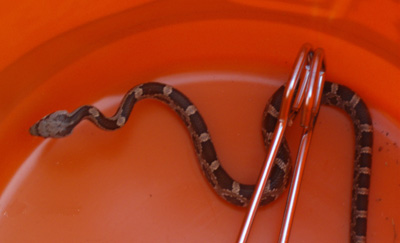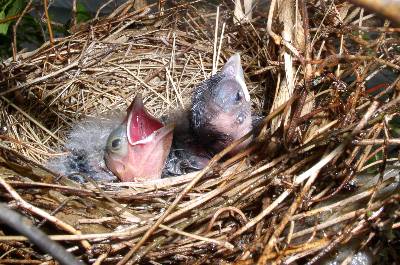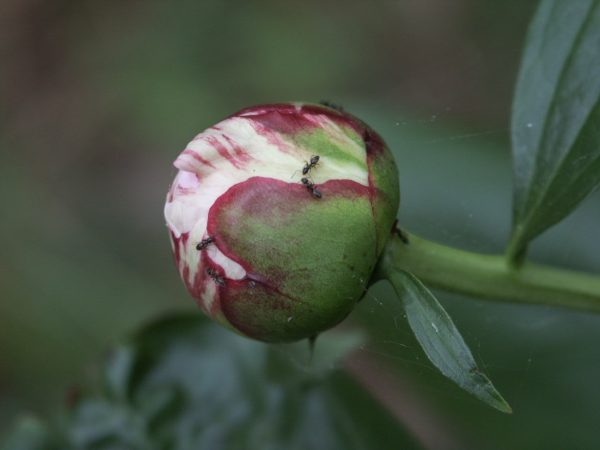Bluegrass – Thermal Blue variety
New varieties of turfgrass come along every year, promising that they are markedly superior to existing grasses. Such is the case with ‘Thermal Blue’ bluegrass.
Since I have had no experience with it, I asked Dr. David Han, Extension Turfgrass Management Specialist at Auburn University, to give me his thoughts. They are as follows:
“We have some ‘Thermal Blue’ at our research plots here in Auburn. It has done better here than I thought it would. We did have to spray it with fungicide a couple of times during the summer, though, to keep it looking nice.
“On our plots with no fungicides, ‘Thermal Blue’ did suffer from quite a bit of leaf spot during the summer, and I consider that a big mark against it compared to ‘Southeast’ tall fescue, for example. It has much better color than most fescues, but that was negated by the leaf spot in the summer. The leaf spot didn’t kill the grass, but I don’t think a homeowner is going to want to mess around with spraying a lawn two or three times every summer, so I am not recommending it for Auburn just yet.
“As you know, Atlanta is a much friendlier environment for cool season grasses in general than Auburn is. The fact that the ‘Thermal Blue’ didn’t die here was encouraging. I was half-expecting it to completely melt away by the end of August, and it certainly didn’t do that. I am not sure it would do as well as tall fescue in Atlanta, but it might. It would be interesting to try it, and we are going to try to take ‘Thermal Blue’ to northern Alabama to test it out there.
“The bottom line is that I wouldn’t recommend ‘Thermal Blue’ for Atlanta just yet, but I might in the future. I can’t see myself recommending it for Auburn, Columbus or Macon, though.”
Dr. Clint Waltz, turf specialist for the University of Georgia, says:
“Texas bluegrass was crossed with Kentucky bluegrass to produce a F1 hybrid. Two commercially available cultivars are ‘Thermal Blue’ and ‘Solar Green’. Scientifically, both should be written Poa arachnifera Torr. x Poa pratensis L.
“I have spoke with my colleagues in Alabama and South Carolina regarding ‘Thermal Blue’. Canopy density or turfgrass coverage seems to be a concern, especially within the first year of seeding. Rust disease has also been problematic on ‘Thermal Blue’ and may lead to canopy thinning during the summer heat stress periods. The canopy thinning is analogous to what is typically observed on tall fescue during the summer.
“Once climatic conditions change in the fall, the grass has rebounded. It may be advantageous to mix ‘Thermal Blue’ with tall fescue to overcome this issue. (Ed. note: ‘Thermal Blue’ is sold in the Atlanta area as a 10% mixture with tall fescue .)
“The consensus is that the color characteristics of ‘Thermal Blue’ are good and would be considered desirable. Lastly, this grass has shown yearly persistence in Alabama, but many of its habits are similar to those of tall fescue.
“Unfortunately, I have little information from Georgia but it is forthcoming. Georgia’s residents will have to be patient.”
Dr. Robert Walker at Auburn University says:
“I would like to put a more positive spin on ThermalBlue than what was given by Drs. Han and Waltz.
“I have evaluated ThermalBlue and DuraBlue hybrid bluegrasses at Auburn University for 3 years. My evaluations continue with the above two cultivars plus 2 additional lines.
“I and Dr. Jacob Dane have and continue to conduct research on water use of hybrid bluegrasses and tall fescue. In the initial study, Thermalblue and DuraBlue compared favorably with Southeast tall fescue in irrigation requirements.
“I am beginning my third year of ThermalBlue in my shaded ( 30 to 40% shade) back lawn. In previous years, tall fescue was a disaster. Surprisingly, these hybrid bluegrasses have pretty good shade tolerance.
“The hybrid bluegrasses have far superior turf quality when compared to Southeast tall fescue; better color, finer texture, and a good rhizome system. The rhizomes should fill in the holes when and where tall fescue declines.
“I certainly would recommend hybrid bluegrass/turf-type tall fescue mixtures in the Atlanta area. Mixtures of ThermalBlue and DuraBlue with GreenKeeper turf-type tall fescue have performed well at our Auburn turf unit.
“We are only in the initial stages of learning about hybrid bluegrasses in the Southeast, but I think these grasses have a lot to offer where tall fescue is being grown.
Homeowner comments about Thermal Blue bluegrass
See also a great installation commentary.
If you have further questions about the performance of ‘Thermal Blue’, the Scott’s customer service number is 1-888-270-3714













